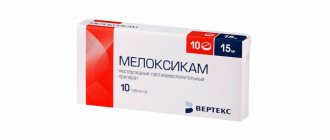Gidazepam is a medication that doctors prescribe as a tranquilizer for seizures. A distinctive feature of Gidazepam from other tranquilizers is that it has an activating effect, rather than a sedative and relaxing effect.
It is a benzodiazepine and has an effect on the central nervous system of the body. Gidazepam has a number of indications and contraindications . It is prescribed strictly on the recommendation of the attending physician, but it is not difficult to buy Gidazepam without a prescription at the pharmacy.
What is Gidazepam?
Gidazepam is a daytime tranquilizer from the group of benzodiazepine derivatives. Gidazepam has anticonvulsant, anxiolytic, sedative, muscle relaxant and amnestic properties. Its action is mediated by increasing the activity of gamma-aminobutyric acid (an inhibitory neurotransmitter of the central nervous system). It is used in the treatment of severe anxiety disorders, as a sleeping aid in the short-term treatment of insomnia, in the treatment of alcohol withdrawal syndrome, and in migraine attacks.
The mechanism of action of benzodiazepines is that they work by increasing the activity of certain neurotransmitters in the brain.
Gidazepam is a daytime anxiolytic (tranquilizer) because it can be used in the morning and afternoon, since it does not have a strong sedative effect and can be used with caution in individuals who are engaged in activities requiring increased concentration.
Pharmacological properties of the drug Gidazepam IC
Pharmacodynamics. Gidazepam IC belongs to the group of benzodiazepine derivatives. It has an original spectrum of pharmacological activity, in which the anxiolytic effect is combined with an activating and antidepressant effect with little side effects and low toxicity. It has the properties of a daytime tranquilizer and selective anxiolytic. It differs from other benzodiazepines by the presence of a pronounced activating effect and a weak muscle relaxant effect. In average therapeutic doses it does not have a hypnotic effect and does not contribute to rapid fatigue during operator activities. In patients with alcoholism during the period of therapeutic remission, mild tranquilizing and anxiolytic effects are noted already in the first days of using the drug; the severity of psychomotor agitation, anxiety and irritability has significantly decreased. The most effective use of the drug is for manifestations of withdrawal syndrome and for maintaining remission in patients with chronic alcoholism. Pharmacokinetics. When administered orally, gidazepam is rapidly absorbed. After a single dose, the effect of the drug developed within 30–60 minutes, reaching a maximum within 1–4 hours, after which its severity gradually decreased. The maximum concentration of gidazepam is observed in the liver, kidneys and adipose tissue. Bioavailability is quite high. It has been established that only the dealkylated metabolite is detected in human blood plasma; the unchanged drug is not detected even in trace amounts. A feature of the pharmacokinetics of gidazepam is the low rate of elimination of its main metabolite after a single dose. The half-life from blood plasma is 86.7 hours, clearance is 3.03 l/h, the time to determine the concentration of the drug in the blood is 127.32 hours. The pharmacokinetics of gidazepam make it possible to use it as a tranquilizer with a low risk of side effects.
What you need to know before you start taking Gidazepam and the main contraindications for use
In case of a hypersensitivity reaction to the main and/or auxiliary components, further use of Gidazepam should be discontinued.
Note! Gidazepam may slow or stop breathing, especially when combined with opioid analgesics or alcohol, because it has a potentiating effect (increases the sum of the effects of each drug that interacts with it).
Main contraindications to the use of Gidazepam:
- myasthenia gravis (muscle weakness disorder) - since Gidazepam reduces muscle tone and motor activity;
- severe breathing problems, such as sleep apnea (breathing stops while you sleep);
- untreated or uncontrolled open-angle glaucoma;
- severe liver and kidney diseases.
Gidazepam should not be used during pregnancy as the baby may become dependent on the drug. This can cause life-threatening withdrawal symptoms in the baby after birth. Infants born on addictive medications may require treatment for several weeks. Also, Gidazepam should not be used during breastfeeding.
Gidazepam is not used for children.
Be carefull! Some people may have suicidal thoughts while taking Gidazepam. Closely monitor changes in your mood, as well as any new or worsening symptoms. Frequent monitoring by a doctor is necessary when taking Gidazepam.
You should not abruptly stop taking Gidazepam, as it can cause a “withdrawal syndrome” and the patient’s general condition will significantly worsen. You should stop taking it gradually, reducing the dosage of this drug.
Special instructions for the use of Gidazepam IC
It is necessary to limit the use of gidazepam in persons with open-angle glaucoma, chronic renal failure and chronic liver failure, alcoholic liver damage. During pregnancy and breastfeeding. The drug should not be used during the specified period. Children. The use of the drug in children under 18 years of age is contraindicated. Impact on the ability to drive vehicles and operate other machinery. During treatment, it is necessary to refrain from activities that require increased attention and speed of psychomotor reactions.
How to take Gidazepam?
Gidazepam is available in tablet form for oral use.
It is necessary to take Gidazepam exactly in accordance with the dosage prescribed by the doctor, since if you independently increase the dose used, addiction can quickly develop.
Gidazepam should only be used for short periods of time. You should not take this medicine for more than 4 months without consulting your doctor.
Also, do not stop using this medication suddenly, even if you feel well. Stopping abruptly may cause more cramping or other unpleasant withdrawal symptoms. Follow your doctor's recommendations for dose reduction.
Method of administration and dosage of Gidazepam
Gidazepam is available in dosages of 20 mg and 50 mg. Treatment always begins with a minimum therapeutic dose; depending on the severity of neurotic conditions, the initial dose is 1 tablet (20 mg) 3 times a day or 1 tablet (50 mg) 3 times a day.
Then the doctor can increase the dose from 100 mg to 200 mg per day. The most optimal dosage is 100 mg per day.
Depending on the conditions for which Gidazepam is indicated, the dosage and course of treatment is selected by the doctor individually for each potential patient, however, the maximum daily dose should not exceed 500 mg, and the duration of continuous use should be no more than 4 months.
Addiction treatment
Treatment of addiction to Gidazepam at Dr. Vasilenko’s medical center is a necessary measure to eliminate the consequences of chronic poisoning of the body with toxic substances, get rid of withdrawal symptoms, and also give up drug use forever.
The course of drug addiction treatment is selected individually for each person after examination by a narcologist and other doctors. To cope with the problem of drug addiction, you need to overcome denial and trust chemical dependency specialists. If you don’t know how to stop using Gidazepam, consult the doctors at Dr. Vasilenko Medical Center.
Author:
Dmitry Nikolaevich Lazebny
What should you not do while taking Gidazepam?
Avoid drinking alcohol. Dangerous side effects or death may occur.
It is also necessary to avoid other drugs that have a depressant effect on the central nervous system.
Grapefruit fruit and its juice may increase the side effects of Gidazepam; caution is required when consuming it during treatment with this drug.
Although Gidazepam is a daytime anxiolytic, it is still advisable to stop driving during the course of treatment with Gidazepam.
What are the side effects of Gidazepam?
Gidazepam is generally well tolerated, but its use may cause common side effects, such as:
- fatigue, lethargy;
- muscle weakness;
- slow motor reactions and imbalance.
You should consult a doctor as soon as possible if you experience one or more of the following symptoms while taking Gidazepam:
- severe drowsiness or dizziness;
- unusual changes in mood or behavior;
- new or worsening symptoms of depression or anxiety;
- thoughts of suicide or self-harm;
- confusion, hallucinations, problems sleeping;
- convulsions.
Be careful! The sedative effects of Gidazepam may occur more frequently and last longer in older adults. Caution should be taken to avoid falling or accidental injury while taking this drug.
Consequences of use
The consequences of using Gidazepam include not only withdrawal symptoms (drug withdrawal), but also psychological changes.
When the desire to use prevails, the addict cannot control his actions , he experiences depression, aggression, emotional swings, irritability, mental disorders, and obsessive thoughts.
The problems that a drug addict faces begin at the moment when Gidazepam does not bring pleasure , but rather causes physical pain and psychological discomfort.
Symptoms and consequences of Gidazepam overdose
Gidazepam is considered to have relatively low toxicity; overdose can occur when taking large doses of this medication.
Symptoms of overdose include:
- unsteadiness and unsteady gait;
- tremors or other problems with muscle control or coordination;
- speech problems;
- increased muscle spasms or tone;
- irregular, fast or slow or shallow breathing;
- pale or blue lips, nails, or skin;
- unusual drowsiness, lethargy, fatigue;
- loss of consciousness.
If one or more of the above symptoms occur, you must contact a medical facility for symptomatic treatment. This may include intravenous administration of the benzodiazepine receptor antagonist flumazenil, but only in a hospital setting.
The consequences of an overdose of Gidazepam can be fatal, so it is very important not to exceed the maximum daily dosage of this medication.
Overdose
An overdose of Gidazepap is possible in case of simultaneous use of the drug with alcohol or other psychotropic drugs. In case of overdose, you may notice symptoms such as dizziness, nausea, vomiting, headache, convulsions and muscle spasms.
In case of an overdose of Gidazepam, you must contact the specialists of Dr. Vasilenko’s medical center to avoid the consequences of use and remove toxic substances from the body. You can call a narcologist to your home for detoxification, consultation and drawing up an individual treatment plan for Gidazepam addiction.
Interaction of Gidazepam with other drugs and substances
The combined use of Gidazepam with other medications and compounds that depress the central nervous system can cause dangerous side effects, including death. These include:
- antidepressants, especially monoamine oxidase inhibitors (eg Niamide);
- neuroleptics, especially phenothiazine derivatives (for example, Aminazine);
- narcotic analgesics (for example, Omnopon);
- alcoholic drinks.
Other drug interactions with Gidazepam include:
- antihypertensives (especially beta blockers) and cardiac glycosides - may cause bradycardia (low heart rate).
Gidazepam may have other drug interactions; to find out more information about this, you should consult your doctor.
What you need to know about Gidazepam
Improper and uncontrolled use of Gidazepam can cause addiction, overdose and even death. Also, if this drug is used systematically, it can cause drug dependence.
Be careful! If you use this medication with opioid drugs, alcohol, or other drugs that make you drowsy or slow your breathing, fatal side effects may occur.
Sources
Hydazepam / State register of medicinal products of Ukraine
Benzodiazepine metabolism: an analytical perspective / PubMed (English)
Metabolism of benzodiazepine and non-benzodiazepine anxiolytic-hypnotic drugs: an analytical point of view / National Library of Medicine (English)
Insomnia or jittery nerves? Use tranquilizers with caution / Harvard Health Publishing
Leisure time physical activity and incident use of prescription tranquilizers: A longitudinal population-based study / NIH


